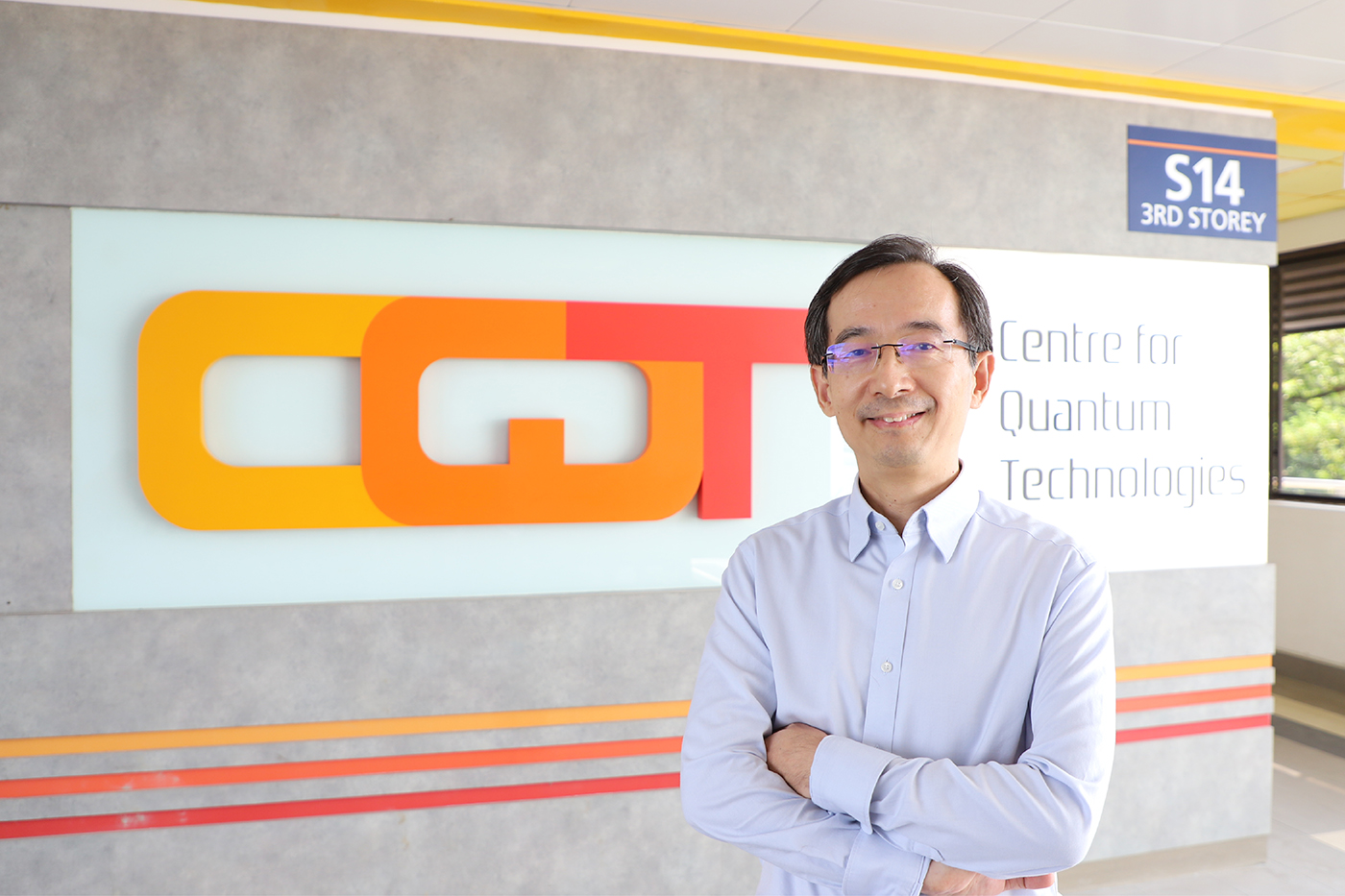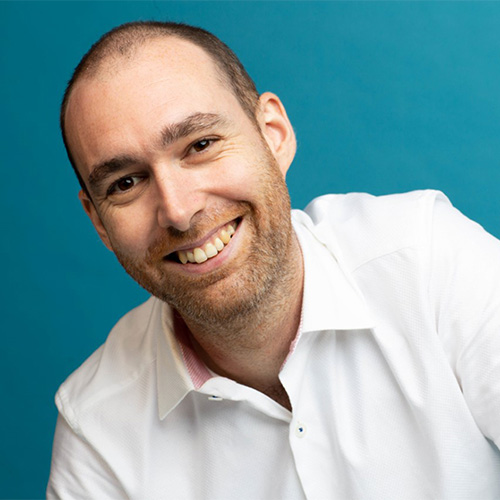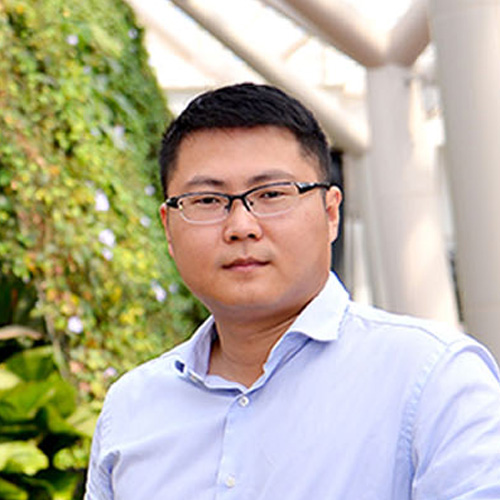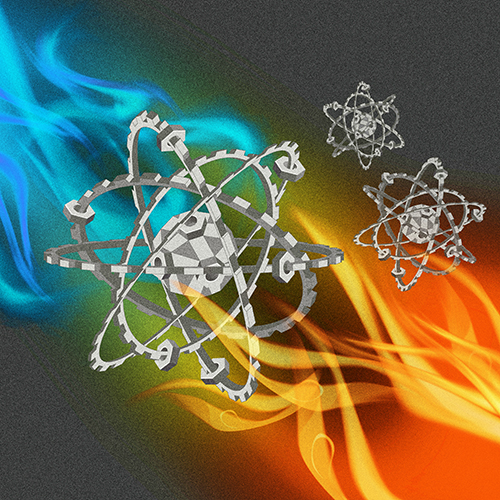Highlights
Meet a CQTian: Gong Jiangbin
 New CQT PI Jiangbin, who is drawn to the fundamental puzzles in quantum physics, hopes that students who feel a passion for quantum will pursue it further.
New CQT PI Jiangbin, who is drawn to the fundamental puzzles in quantum physics, hopes that students who feel a passion for quantum will pursue it further.
Gong Jiangbin is one of four new Principal Investigators announced at CQT in July 2022. He is currently also Provost’s Chair Professor and Head of Department at the NUS Department of Physics, where he has researched a variety of topics including quantum dynamics control, quantum simulation, topological phases of matter, quantum thermodynamics and quantum chaos.
What drew you to quantum physics research?
I did my PhD at the University of Toronto in theoretical chemical physics – basically on how to use quantum effects to control chemical reaction dynamics or molecular dynamics – and I was strongly influenced by how chemists, such as my PhD supervisor Paul Brumer, think about using quantum effects to do something useful. I am also strongly influenced by some other prominent Professors at the University of Toronto like Aephraim Steinberg who is an experimentalist in quantum optics. It was during my PhD that I realised that quantum mechanics is so strange. After this realisation, quantum mechanics became very attractive to do research in.
Could you expand on what you mean about the strangeness of quantum mechanics?
Classical mechanics is about the deterministic evolution of reality. On the other hand, in quantum physics, we are not allowed to say what properties a system possesses before we make a choice about how the system is observed. Yet, in many cases, how quantum systems evolve with time can be well understood by the corresponding evolution of classical systems with time. In other words, the evolution of something real can be connected with the evolution of something very abstract. I don’t think this connection is well understood. It is a fundamental question asking at which point does classical reality emerge from the quantum world.
Do you have an idea about how to approach this puzzle?
Maybe the key to understanding the quantum-classical transition is measurement strength. When you handle big systems, your measurement becomes very weak compared with the energy scale of the system being measured. When you observe a small quantum system, your measurement is most likely a strong measurement and hence have a huge impact on the system.
What else are you working on?
Quantum dynamics, which is about the time evolution of quantum systems, is another part. Though in most cases we cannot predict what’s going to happen in a single measurement, we can still work out the behaviour of quantum systems upon the average over many measurements. On the other hand, understanding quantum dynamical behaviour under a sequence of measurements would be useful for, for example, measurement-based quantum computing, where what we do next depends on the result from a measurement at present.
My group is also studying topological phases of matter. In topological lattices, there are some states localised at the edge of the material, for example an array of cold atoms, that are very robust. We say they are “protected by topology”. The idea is to use these robust states to encode quantum information so that we can apply quantum gates or to transport quantum information from one place in the system to another place. Because of the topological protection, this kind of operation can offer advantages.
What is your favourite aspect of your work?
I think it’s very important to have the freedom to do research where we are not bounded by too specific goals. That’s why I appreciate the research direction at CQT called basic science, which I think is about pursuing research for your own curiosity (and joy). We hope that by freely exploring, you can get something you did not expect, which could be highly original and have a lasting value.
Did you make any accidental discoveries?
In the old days, Max Planck introduced the quantisation of energy and solved a divergence issue, the so-called “ultraviolet catastrophe” in black body radiation. We realised, sort of accidentally, that in the so-called Jarzynski’s equality – a celebrated fluctuation theorem – one may however introduce divergence by quantising a system. The essence of this equality is to average many measurable quantities to get another physical quantity. Applying this equality in the quantum domain, we quantise the system and perform an average over those measured quantities: we see that the variance of those quantities under consideration will more likely suffer from divergence due to quantisation – that is, quantum effects here make things worse. This is bizarre. We don’t have a solution to this problem yet.
You’re joining CQT as a Principal Investigator with collaborations already in place. Could you share more about your work with CQT?
Previously, I collaborated with Manas Mukherjee’s group on quantum heat engines. Now, I look forward to collaborating with Loh Huanqian’s group using Rydberg atom arrays to advance new frontiers in topological matter and many-body quantum chaos. Outside of research, I have been involved in many qualifying exams of CQT PhD students. I also enjoyed many casual discussions with CQT PIs including Valerio Scarani, Dagomir Kaszlikowski, Kwek Leong Chuan and Berge Englert.
How do you manage to keep research going alongside your responsibilities as Head of Department at NUS Physics?
I don’t have a definite answer. I just became Head one year ago so I don’t know yet how well I’m doing. I’m fortunate to have attracted some good students and postdocs. Maybe I’m spending a bit less time with my students but I’m still happy that sometimes my input can still make a big difference in their research. This is very fulfilling to me.
Is there anything else that you would like people to know?
To new students in physics, ask yourself if you truly like it or not. You really have to be passionate about it to do quality research. I hope that students who really like quantum physics will pursue it further.
Learn more
Related Stories
 | Meet a CQTian: Steven Touzard July 25 2022 |
 | Meet a CQTian: Gao Weibo July 20 2022 |
 | CQT appoints four new Principal Investigators July 19 2022 |
 | To make an atom-sized machine, you need a quantum mechanic May 04 2020 |






